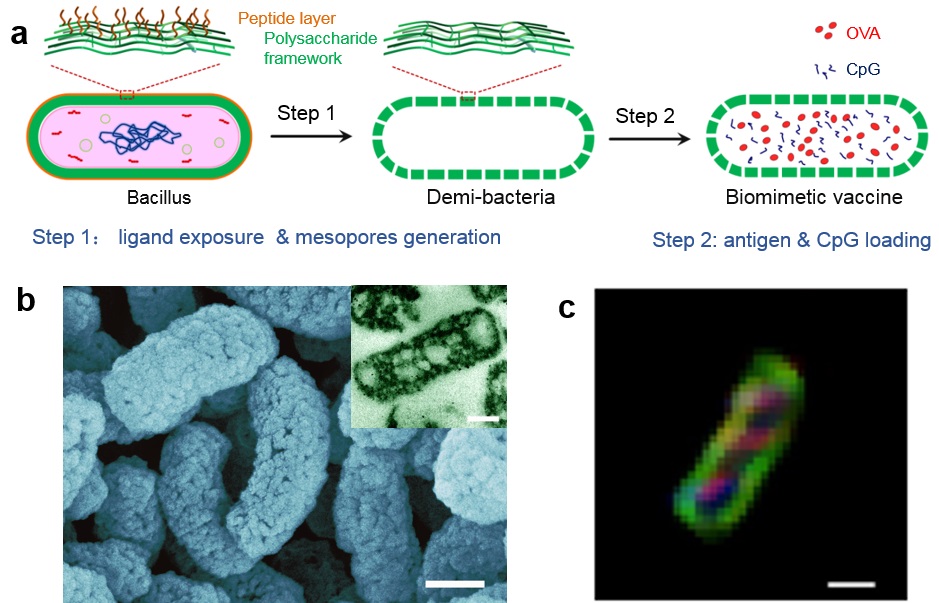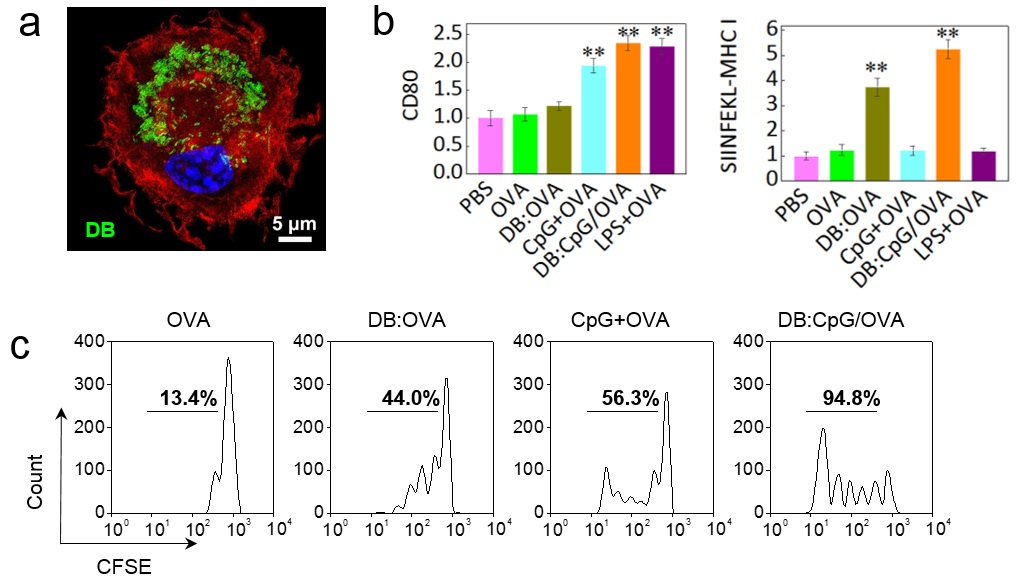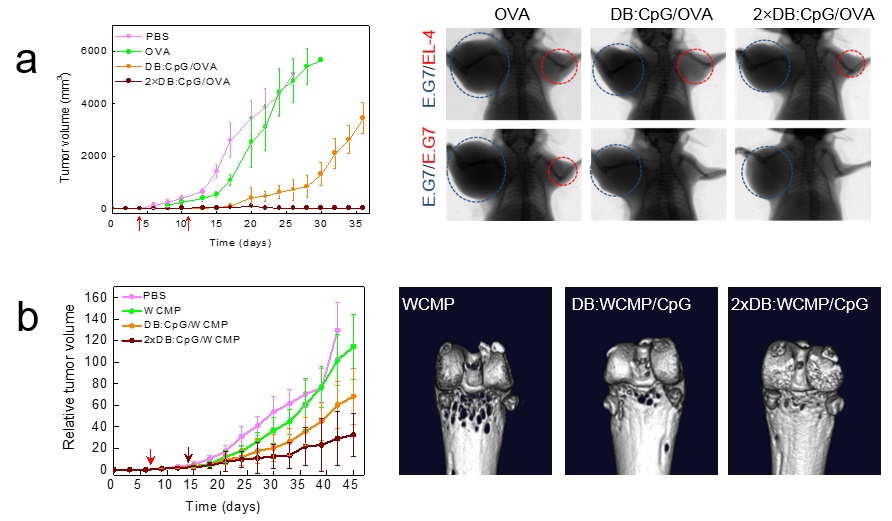Cancer has been one of the most serious health issues in the world. Recently, cancer immunotherapy, utilizing one’s own immune system to destruct cancer cells, has emerged as an effective tool in cancer therapy. It has even been selected as the "top breakthrough of the year" by the journal Science in 2013. One of the most attractive immunotherapy strategies is therapeutic cancer vaccine. However, tumor antigens are usually poor immunogenic in nature, which obstructed the development of therapeutic cancer vaccine. Therefore, the exploitation of a new potent therapeutic cancer vaccine is urgently needed.
Inspired by nature that immune system can be efficiently evoked by pathogens, Prof. Ma and Wei et al. from the Institute of Process Engineering (IPE) of the Chinese Academy of Sciences (CAS) developed a novel biomimetic tumor vaccine with multiple pathogen-like features that succeeded in inducing efficient cellular immune response. Through an optimized hydrothermal treatment, the intracellular components of bacteria were removed, while the solid polysaccharide cell walls survived with special surface ligands and original morphology. The resulted bacterial shells were also endowed with a well-tailored hollow/porous structure for efficient accommodation of antigens and other immunostimulants (Figure 1). Such an “artificial pathogen” could quickly be recognized by the immune system, potently recruit and activate antigen present cells, deliver/cross-present antigen, and arouse robust T cell response (Figure 2). As a result, the excellent anti-tumor and anti-metastatic performances were achieved in different tumor-bared animal models with little side effects (Figure 3). This proof-of-concept study provides a feasible biomimetic vaccine construction strategy that fulfills the request of therapeutic cancer vaccine. It opens a new avenue for the development of cancer immunotherapy via pathogen infection-mimicking.

Figure 1 Fabrication of biomimetic vaccine. (a) Schematic illustration of the synthesis of DB and biomimetic vaccine construction. (b) Scanning electron microscope (SEM) with inserted transmission electron microscope (TEM) images of DB. Both scale bars were 200 nm. (c) High-resolution CLSM images showing that FITC-OVA (red) and AMCA-CpG (blue) were encapsulated inside HiLyte Fluor 647-conjugated DB (green). Scale bar, 200 nm. (Image by MA Guanghui et al.)

Figure 2 Interaction between biomimetic vaccine and immune cells. (a) CLSM image of a DC ‘invaded’ by high amounts of DB (green). Scale bar, 5 μm. (b) Expression of costimulatory markers (CD80) and and recognition signals (SIINFEKL-MHC I) on DCs after 24 h of incubation. (c) CFSE-labelled MHC I-restricted, OVA-specific T cells proliferation after different treatment. (Image by MA Guanghui et al.)

Figure 3 Biomimetic vaccine exhibits effective tumor elimination and anti-metastatic performances. (a) Tumor progress and representative tumor metastasis on lymphoma model. (b) Tumor progress and representative bone erosions caused by tumor metastasis after different treatment on 4T1 tumor model. (Image by MA Guanghui et al.)
Their work titled “Biomimetically Engineered Demi-Bacteria Potentiate Vaccination against Cancer” has been published in Advanced Science(2017,1700083), Prof. MA Guanghui and Prof. WEi wei are the corresponding authors. This work was supported by National Science and Technology Major Projects for “Major New Drugs Innovation and Development” (2014ZX09102045-004), the 973 Program (2013CB531500), the National Nature Science Foundation of China (21622608) and Beijing Talents Fund (No.2015000021223ZK20).
http://onlinelibrary.wiley.com/doi/10.1002/advs.201700083/epdf
Media Contact:
YUAN Pei
International Cooperation Office, Institute of Process Engineering, Chinese Academy of Sciences, Beijing 100190, P. R. China.
E-mail: pyuan@ipe.ac.cn
Tel: 86-10-82544882